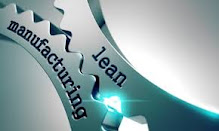Cutting Waste: How Lean Thinking Improves Efficiency in Operations
In the world of business and manufacturing, waste is like that one colleague who always shows up to meetings but never contributes anything useful. You know the type. Lean thinking, however, is the superhero that swoops in to save the day, cutting waste and boosting efficiency faster than you can say “Kaizen.”
What is Lean Thinking?
Lean thinking is all about creating more value with fewer resources. It’s like making a gourmet meal out of leftovers – you get something amazing without the extra cost. The core idea is to maximize customer value while minimizing waste. Sounds simple, right? Well, it is, but it also requires a bit of a mindset shift.
Identifying Waste
The first step in lean thinking is to identify waste. In lean lingo, waste is anything that doesn’t add value to the customer. There are seven deadly sins of waste: overproduction, waiting, transport, extra processing, inventory, motion, and defects. Think of them as the seven dwarfs of inefficiency, each one causing its own brand of chaos.
Eliminating Waste
Once you’ve identified the waste, it’s time to eliminate it. This is where lean tools like 5S, value stream mapping, and continuous improvement (or Kaizen) come into play. It’s like spring cleaning for your business processes – everything gets a good scrub, and only the essentials remain.
5S: Sort, Set in order, Shine, Standardize, Sustain
5S is the Marie Kondo of lean tools. It helps you sort through the clutter, set things in order, shine up your workspace, standardize processes, and sustain the improvements. If it doesn’t spark joy (or add value), it’s out!
Value Stream Mapping
Value stream mapping is like a treasure map for efficiency. It helps you see where value is being created and where it’s being lost. By mapping out your processes, you can pinpoint exactly where the waste is hiding and plot a course to eliminate it.
Continuous Improvement (Kaizen)
Kaizen is the secret sauce of lean thinking. It’s all about making small, incremental improvements every day. Think of it as the tortoise in the race against waste – slow and steady wins the efficiency race.
The Benefits of Lean Thinking
By cutting waste, lean thinking helps businesses improve efficiency, reduce costs, and increase customer satisfaction. It’s like getting a triple scoop of ice cream for the price of one. Plus, it creates a culture of continuous improvement, where everyone is always looking for ways to do things better.
So, if you’re tired of dealing with waste in your business or manufacturing processes, it’s time to embrace lean thinking. With a little bit of effort and a lot of determination, you can cut waste, improve efficiency, and maybe even have a little fun along the way. After all, who doesn’t love a good spring cleaning?




Comments
Post a Comment